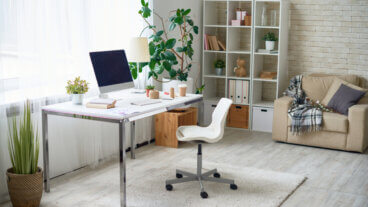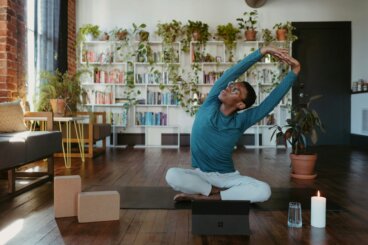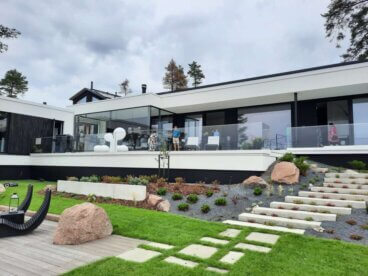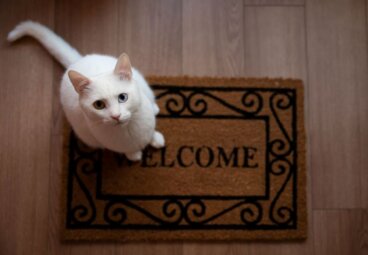Flexible Spaces: How to Create a Home Office or Gym
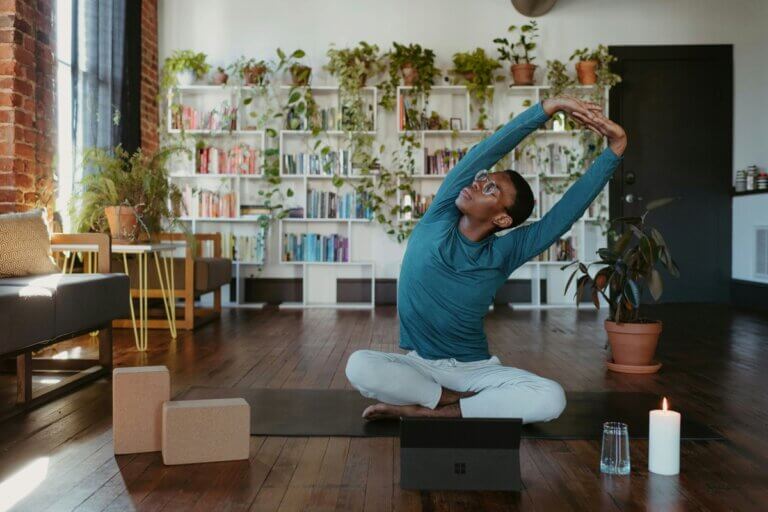
Whether you work remotely or want to stay in shape without leaving your home, creating a home office or gym can seem complicated. However, with a little creativity and some strategic changes, you can create flexible spaces in your home that suit your needs.
Whether you live in a small apartment or a larger home, with smart planning and practical storage solutions, it’s possible to balance work and fitness needs in one functional space. Here are the best tips to do just that – let’s get to work!
1. Identify your priorities
Before reorganizing your home, take the time to prioritize what you really need. If remote work is part of your routine, an office should be your primary focus. On the other hand, if staying in shape is your goal, creating a home gym might take priority.
A home office usually requires a desk, chair, and storage for documents, while a workout area requires space for exercise equipment. Depending on the type of workout you do, this could be as simple as a yoga mat or as complex as a weight bench with room for movement.
2. Evaluate and optimize your space
Once you’ve decided what you need, thoroughly evaluate each area of your home to identify those nooks and crannies or rooms that are underutilized or can be reorganized more efficiently.
The goal is to find spaces that you can transform to serve new functions, such as a home office or gym, without major remodeling. Look for areas of your home that are underutilized, such as guest rooms, attics, basements, or living rooms.
3. Sort and classify
To create functional spaces at home, it’s essential to do a thorough cleaning and organize your belongings. So, after choosing the space that will become your next office or workout area, classify the objects you have in different categories: Those you should keep, donate, sell, or discard.
This process will allow you to clear the area and leave only the essentials, making it easier to create a space for work or exercise. In addition, by reducing clutter, your home will become more efficient and harmonious, allowing every corner to have a clear purpose.
4. Prioritize storage space
For items you don’t want to part with but don’t use regularly, consider investing in storage solutions. Personal storage units are an excellent option for keeping belongings safe while freeing up space at home.
Likewise, you can use creative storage options, such as under-bed boxes, built-in cabinets, or containers hidden under desks or tables. Multifunctional furniture, such as an ottoman or bench with internal storage, can help make the most of available space while keeping your home tidy.
5. Maximize vertical spaces
Don’t forget to look up! Vertical space can be used for additional storage and organization. Shelves, hooks, and wall-mounted cabinets can store books, office supplies, or exercise equipment while keeping everything within easy reach.
Perforated boards and hooks are perfect for hanging items such as yoga mats or gym accessories, freeing up valuable floor space.
6. Consider having a dual-purpose space
For small homes, work and exercise areas can be combined in a dual-purpose room. A living room can serve as a home office by placing a desk and computer against one wall, while small exercise equipment, such as an exercise bike or hand weights, can be placed in another corner.
If your bedroom is spacious enough, you can also create a small workout area or office there, making the most of the available square footage.
7. Use creative solutions to divide your spaces
Even homes with very limited space can accommodate an office or gym with a little creativity. Room dividers or folding screens can help separate part of a living room into a work space or workout area.
Underused areas such as attics, basements, or even forgotten corners can be turned into functional spaces with minimal effort. Small corners under stairs or near windows with good natural light can be perfect for a compact desk when larger rooms aren’t available.
Get pumped about creating a home office or a gym!
Creating a flexible space in your home, whether for work or exercise, doesn’t have to be an overwhelming task. With good planning, optimization of available space, and the use of multifunctional furniture, it’s possible to adapt any corner of your home to fit your daily needs.
In the end, the most important thing is that the place where you live reflects your lifestyle and offers you the comfort you are looking for, allowing you to maintain a healthy balance between your professional and personal responsibilities without leaving home.
Whether you work remotely or want to stay in shape without leaving your home, creating a home office or gym can seem complicated. However, with a little creativity and some strategic changes, you can create flexible spaces in your home that suit your needs.
Whether you live in a small apartment or a larger home, with smart planning and practical storage solutions, it’s possible to balance work and fitness needs in one functional space. Here are the best tips to do just that – let’s get to work!
1. Identify your priorities
Before reorganizing your home, take the time to prioritize what you really need. If remote work is part of your routine, an office should be your primary focus. On the other hand, if staying in shape is your goal, creating a home gym might take priority.
A home office usually requires a desk, chair, and storage for documents, while a workout area requires space for exercise equipment. Depending on the type of workout you do, this could be as simple as a yoga mat or as complex as a weight bench with room for movement.
2. Evaluate and optimize your space
Once you’ve decided what you need, thoroughly evaluate each area of your home to identify those nooks and crannies or rooms that are underutilized or can be reorganized more efficiently.
The goal is to find spaces that you can transform to serve new functions, such as a home office or gym, without major remodeling. Look for areas of your home that are underutilized, such as guest rooms, attics, basements, or living rooms.
3. Sort and classify
To create functional spaces at home, it’s essential to do a thorough cleaning and organize your belongings. So, after choosing the space that will become your next office or workout area, classify the objects you have in different categories: Those you should keep, donate, sell, or discard.
This process will allow you to clear the area and leave only the essentials, making it easier to create a space for work or exercise. In addition, by reducing clutter, your home will become more efficient and harmonious, allowing every corner to have a clear purpose.
4. Prioritize storage space
For items you don’t want to part with but don’t use regularly, consider investing in storage solutions. Personal storage units are an excellent option for keeping belongings safe while freeing up space at home.
Likewise, you can use creative storage options, such as under-bed boxes, built-in cabinets, or containers hidden under desks or tables. Multifunctional furniture, such as an ottoman or bench with internal storage, can help make the most of available space while keeping your home tidy.
5. Maximize vertical spaces
Don’t forget to look up! Vertical space can be used for additional storage and organization. Shelves, hooks, and wall-mounted cabinets can store books, office supplies, or exercise equipment while keeping everything within easy reach.
Perforated boards and hooks are perfect for hanging items such as yoga mats or gym accessories, freeing up valuable floor space.
6. Consider having a dual-purpose space
For small homes, work and exercise areas can be combined in a dual-purpose room. A living room can serve as a home office by placing a desk and computer against one wall, while small exercise equipment, such as an exercise bike or hand weights, can be placed in another corner.
If your bedroom is spacious enough, you can also create a small workout area or office there, making the most of the available square footage.
7. Use creative solutions to divide your spaces
Even homes with very limited space can accommodate an office or gym with a little creativity. Room dividers or folding screens can help separate part of a living room into a work space or workout area.
Underused areas such as attics, basements, or even forgotten corners can be turned into functional spaces with minimal effort. Small corners under stairs or near windows with good natural light can be perfect for a compact desk when larger rooms aren’t available.
Get pumped about creating a home office or a gym!
Creating a flexible space in your home, whether for work or exercise, doesn’t have to be an overwhelming task. With good planning, optimization of available space, and the use of multifunctional furniture, it’s possible to adapt any corner of your home to fit your daily needs.
In the end, the most important thing is that the place where you live reflects your lifestyle and offers you the comfort you are looking for, allowing you to maintain a healthy balance between your professional and personal responsibilities without leaving home.
